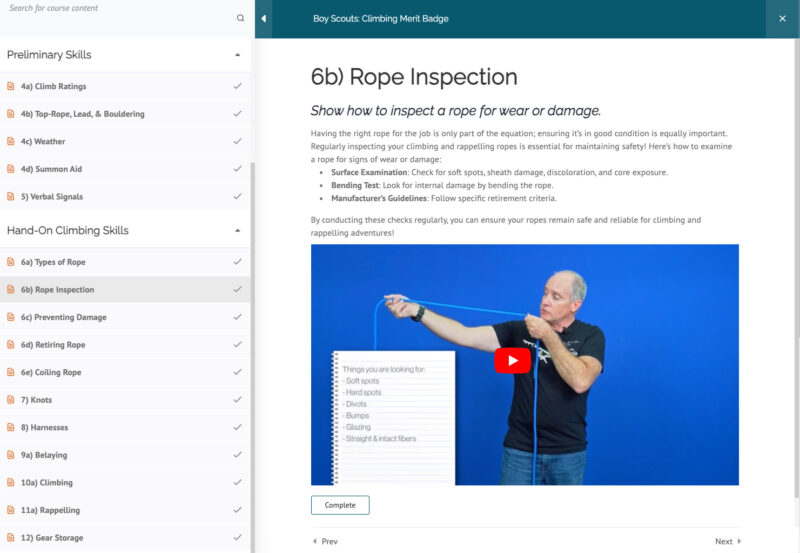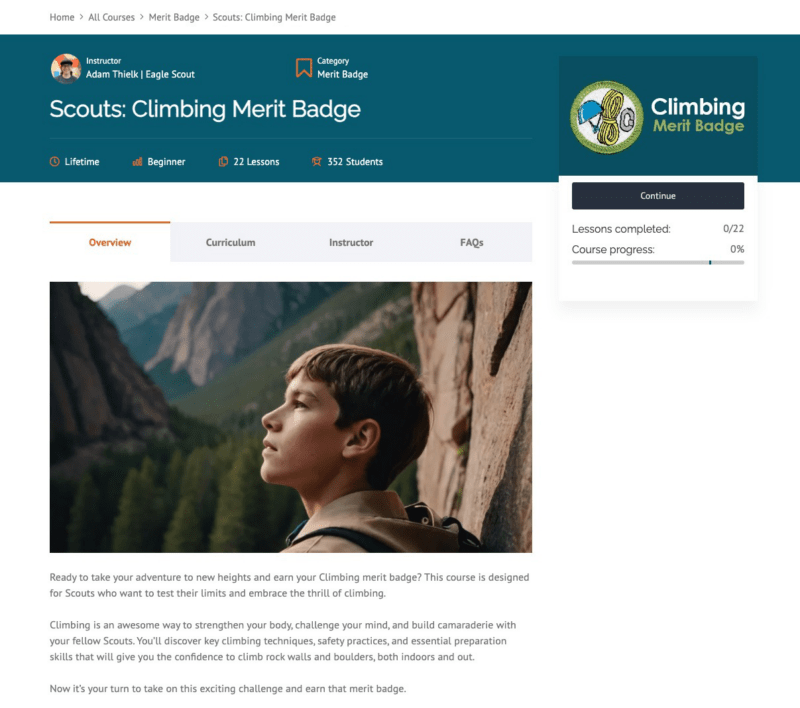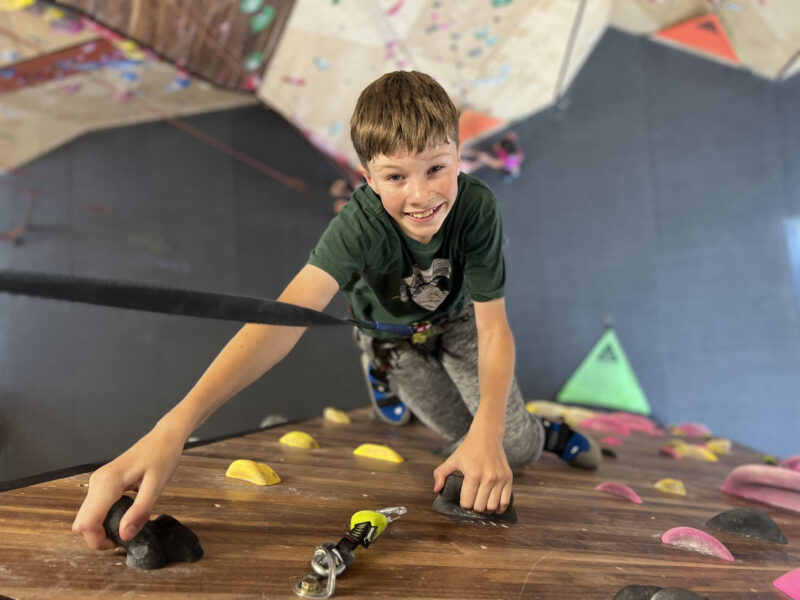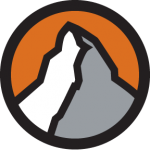Our online course will cover written & video material for each of these requirements with a quiz question for each to help verify the scout’s understanding.

1. Do the following:
- (a) Explain to your counselor the most likely hazards you may encounter while participating in climbing and rappelling activities and what you should do to anticipate, help prevent, mitigate, and respond to these hazards.
- (b) Show that you know first aid for and how to prevent injuries or illnesses that could occur during climbing activities, including heat and cold reactions, dehydration, stopped breathing, sprains, abrasions, fractures, rope burns, blisters, snakebite, concussions, and insect bites or stings.
- (c) Identify the conditions that must exist before performing CPR on a person.
2. Learn the Leave No Trace principles and Outdoor Code, and explain what they mean.
3. Present yourself properly dressed for belaying, climbing, and rappelling (i.e., appropriate clothing, footwear, and a helmet; rappellers can also wear gloves).
4. Location. Do the following:
- (a) Explain how the difficulty of climbs is classified, and apply classifications to the rock faces or walls where you will demonstrate your climbing skills.
- (b) Explain the following: top-rope climbing, lead climbing, and bouldering.
- (c) Evaluate the safety of a particular climbing area. Consider weather, visibility, the condition of the climbing surface, and any other environmental hazards.
- (d) Determine how to summon aid to the climbing area in case of an emergency.
5. Verbal signals. Explain the importance of using verbal signals during every climb and rappel, and while bouldering. With the help of the merit badge counselor or another Scout, demonstrate the verbal signals used by each of the following:
- (a) Climbers
- (b) Rappellers
- (c) Belayers
- (d) Boulderers and their spotters
6. Rope. Do the following:
- (a) Describe the kinds of rope acceptable for use in climbing and rappelling.
- (b) Show how to examine a rope for signs of wear or damage.
- (c) Discuss ways to prevent a rope from being damaged.
- (d) Explain when and how a rope should be retired.
- (e) Properly coil a rope.
7. Knots. Demonstrate the ability to tie each of the following knots. Give at least one example of how each knot is used in belaying, climbing, or rappelling.
- (a) Figure eight on a bight
- (b) Figure eight follow-through
- (c) Water knot
- (d) Double fisherman’s knot (grapevine knot)
- (e) Safety knot
8. Harnesses. Correctly put on a commercially made climbing harness.
9. Belaying. Do the following:
- (a) Explain the importance of belaying climbers and rappellers and when it is necessary.




